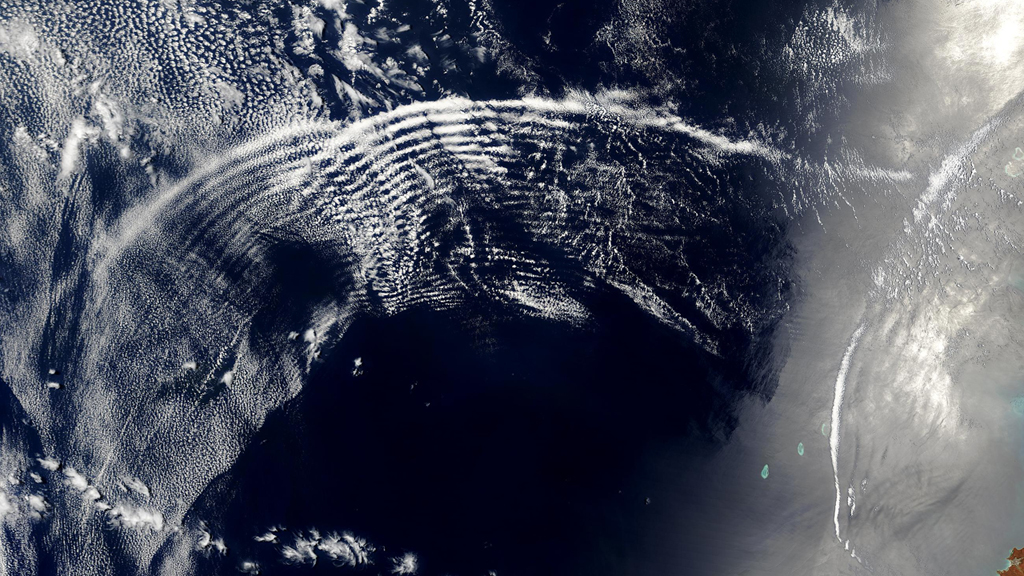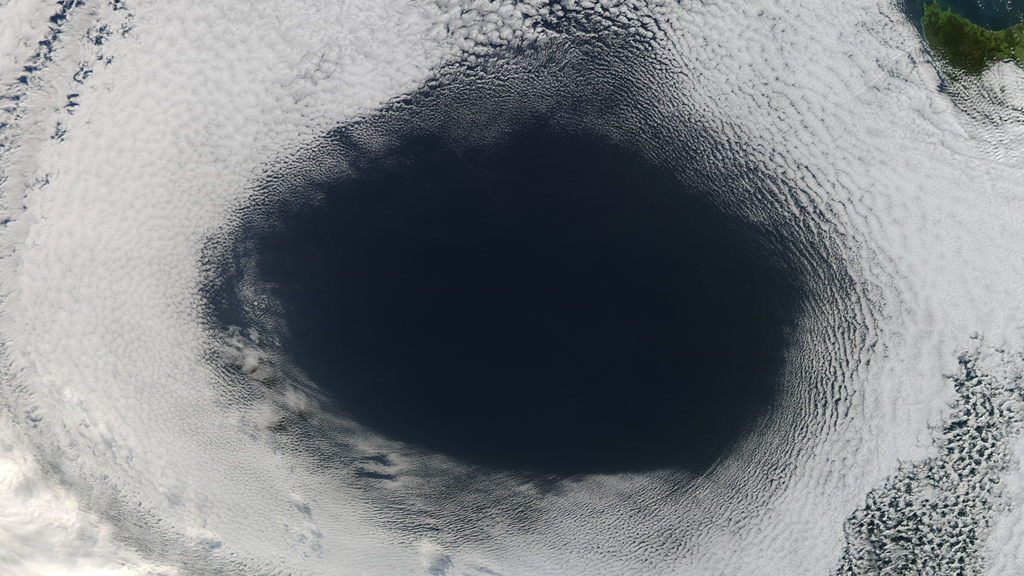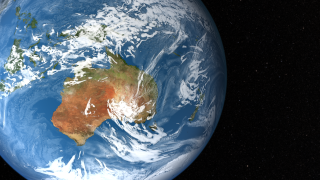Earth
ID: 11083

Sheets of crisp, bright white clouds blanket our planet. That's true even in particularly dry places like the island continent of Australia. There, cloud-filled skies are mainly observed during the rainy winter season, except in the north, where the majority of storms take place in summer. Australia sits far south of the equator and under a strong, migrating zone of high-pressure called the subtropical ridge. These conditions influence its climate and expose the continent to a variety of weather extremes: drought, floods, heat waves, severe storms and tropical cyclones. At the same time, Australia gets more than 3,000 hours of sunshine each year, making it one of the sunniest places in the world. And, its clouds look incredibly cool from space. Using an advanced supercomputer climate model called GEOS-5, NASA scientists recreated 19 days of changing cloud cover over Australia. Watch the visualization to explore the movement of different systems that formed across the continent.




Under The Influence





Related Story
Story Credits
Visualizers/Animators:
Neema Mostafavi (USRA)
Alex Kekesi (Global Science and Technology, Inc.)
Ernie Wright (USRA)
Producer:
Ryan Fitzgibbons (USRA)
Lead Scientist:
William Putman (NASA/GSFC)
Lead Writer:
Kayvon Sharghi (USRA)
Neema Mostafavi (USRA)
Alex Kekesi (Global Science and Technology, Inc.)
Ernie Wright (USRA)
Producer:
Ryan Fitzgibbons (USRA)
Lead Scientist:
William Putman (NASA/GSFC)
Lead Writer:
Kayvon Sharghi (USRA)
Please give credit for this item to:
NASA's Goddard Space Flight Center
NASA's Goddard Space Flight Center
Short URL to share this page:
https://svs.gsfc.nasa.gov/11083
Keywords:
SVS >> App
NASA Science >> Earth
https://svs.gsfc.nasa.gov/11083
Keywords:
SVS >> App
NASA Science >> Earth








